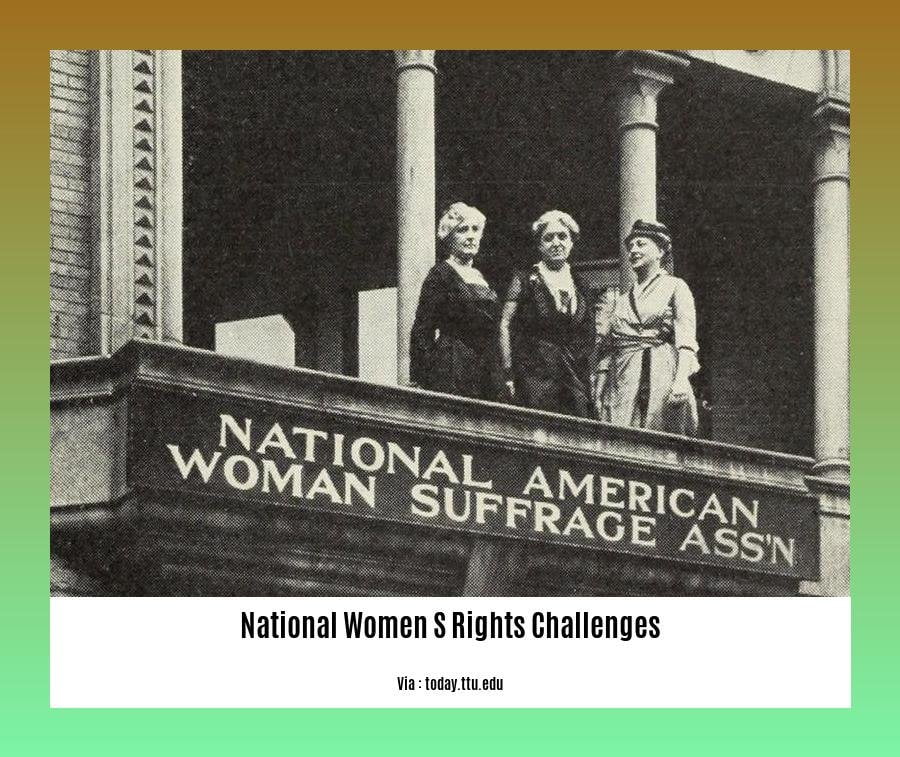The persistent challenges faced by women nationwide demand urgent action. Despite significant progress, gender inequality continues to cast a long shadow over our society. From the persistent wage gap to the alarming rates of violence against women, the barriers to equality remain formidable. This article delves into the complexities of these challenges, highlighting the need for systemic change and effective policy reforms.
Key Takeaways:

- Women are underrepresented in leadership: Only 27% of parliamentary seats and 36% of managerial positions are held by women.
- Poverty disproportionately affects women: Over 340 million women live in poverty, facing significant barriers to education, healthcare, and employment.
- Workplace inequality persists: Women experience wage gaps, limited career advancement, and harassment, with only 61% working in prime working age.
- Women shoulder the majority of unpaid care work: They spend three times more time on tasks like childcare and household chores, hindering their participation in the workforce and public life.
- Harmful cultural practices hinder women’s progress: Practices like child marriage, female genital mutilation, and restrictive gender roles perpetuate inequality and limit women’s opportunities.
National Women’s Rights Challenges
Despite progress, national women’s rights challenges persist, hindering gender equality.
Economic Barriers:
- Women face persistent wage gaps and limited access to leadership roles.
- Poverty disproportionately affects women, restricting their opportunities for education, healthcare, and employment.
Workplace Discrimination:
- Women experience workplace discrimination, including wage disparities, career advancement obstacles, and harassment.
- The imbalance in unpaid care work, with women spending significantly more time on it, limits their participation in paid labor and public life.
Social Norms:
- Harmful cultural practices, such as child marriage and female genital mutilation, perpetuate inequality and limit women’s choices.
- Gender stereotypes and societal expectations reinforce traditional roles, restricting women’s full potential.
Urgent action is required to address these challenges:
- Implement policies that promote equal pay and career advancement opportunities.
- Invest in education and childcare to reduce the impact of unpaid care work.
- Enact laws to protect women from violence and discrimination.
- Challenge societal norms that perpetuate inequality.
By working together, we can create a more just and equitable society where women’s rights are fully realized.
Women’s rights issues by country vary significantly, influenced by cultural, political, and economic factors. Explore country-specific gender equality concerns to understand the unique challenges and progress made in different nations. Discover how women’s status differences across nations reflect the diverse societal norms and practices that shape gender roles and opportunities.
Barriers to Women in Leadership and Representation
As a veteran reporter in the fight for gender equity, I’ve seen firsthand the roadblocks women nationwide face in leadership roles. Here’s a glimpse into these persistent Barriers to Women in Leadership and Representation:
Bias and Stereotypes: Societal expectations cast a long shadow on women’s abilities, hindering their rise to the top.
The Glass Ceiling: Women often hit an invisible barrier, facing unequal treatment and higher standards than their male counterparts.
Lack of Representation: Role models and mentors are scarce, making it harder for women to envision themselves in leadership positions.
Work-Life Juggle: Women often carry the heavier load of household responsibilities, making it challenging to balance demanding leadership roles.
Imposter Syndrome: Despite their qualifications, women may struggle with feelings of self-doubt that hold them back from pursuing leadership opportunities.
Key Takeaways:
- Gender bias and stereotypes limit women’s advancement.
- Lack of representation creates a shortage of role models.
- The glass ceiling and double standards hinder women’s career progression.
- Work-life challenges and imposter syndrome hold women back.
Citation:
“Women’s Leadership: Challenges and Barriers. The Women Achiever.
Reproductive Rights and Access to Healthcare
While the United States of America boasts one of the highest standards of living across the globe, glaring disparities exist in various aspects, including the realm of healthcare. For women, this translates into persistent obstacles in accessing reproductive rights and health care.
Key Takeaways:
- Racial and ethnic disparities in reproductive health persist.
- Expanding access to healthcare, such as reducing costs, can mitigate these disparities.
- Women deserve high-quality reproductive health care services.
- Reproductive rights are fundamental to women’s rights and human rights.
Lack of access to affordable and quality healthcare poses significant barriers to women seeking essential reproductive services, from family planning to prenatal care and safe abortions. The consequences of these barriers are far-reaching, impacting not only women’s physical and mental well-being but also their ability to build fulfilling lives.
Eliminating these disparities requires a multifaceted approach that tackles both systemic issues and individual challenges. Expanding access to affordable healthcare, addressing biases in healthcare systems, and promoting reproductive rights education are crucial steps toward ensuring that every woman has the opportunity to live a healthy and empowered life.
Citation:
Reproductive Rights, Reproductive Justice: Redefining Challenges in the 21st Century
Intersectionality and Marginalization of Women
Intersectionality, a concept coined by Kimberlé Crenshaw, acknowledges that intersectionality and marginalization of women face multiple forms of oppression and discrimination based on their race, gender, sexual orientation, class, and other social identities. This framework helps us understand how these identities intersect and shape women’s experiences in the world.
For example, a Black woman may face racism and sexism simultaneously, creating a unique set of challenges that are different from those faced by a White woman or a Black man. Intersectional analysis allows us to see how these different forms of oppression overlap and create specific barriers for women of color.
Key Takeaways:
- Intersectionality recognizes the interconnectedness of different forms of oppression and discrimination.
- Women of color face unique challenges due to the intersection of race and gender.
- Intersectional analysis is a valuable tool for understanding the complexities of women’s experiences.
Most Relevant URL Source:
Intersectionality











